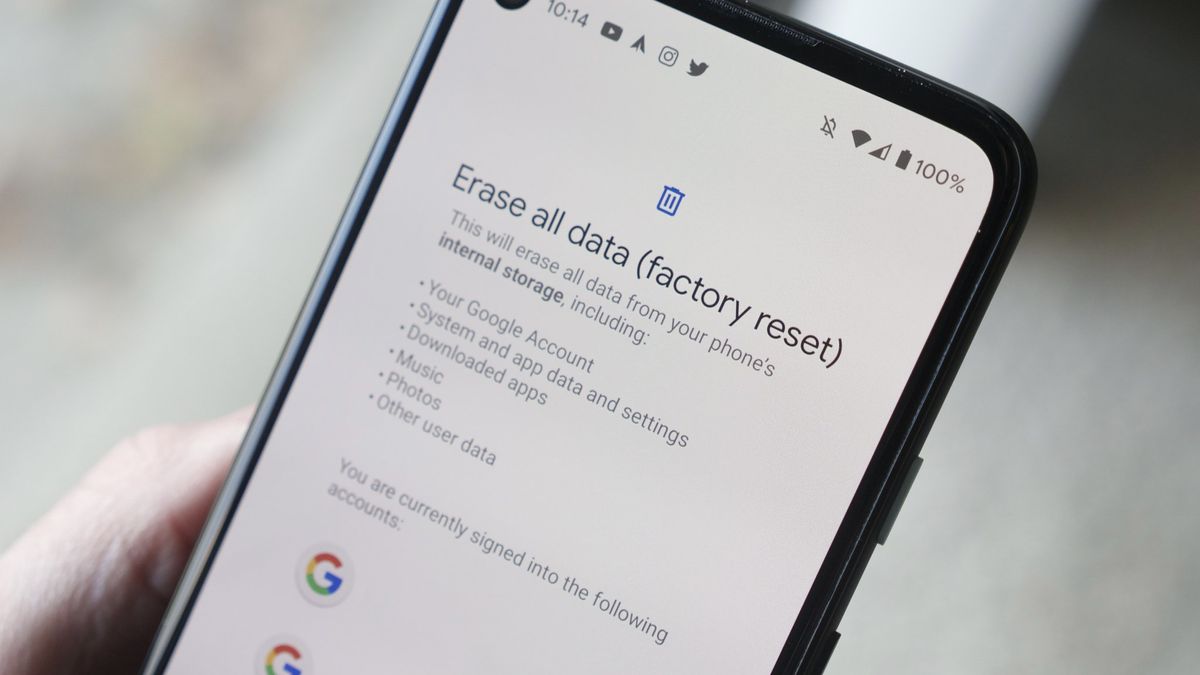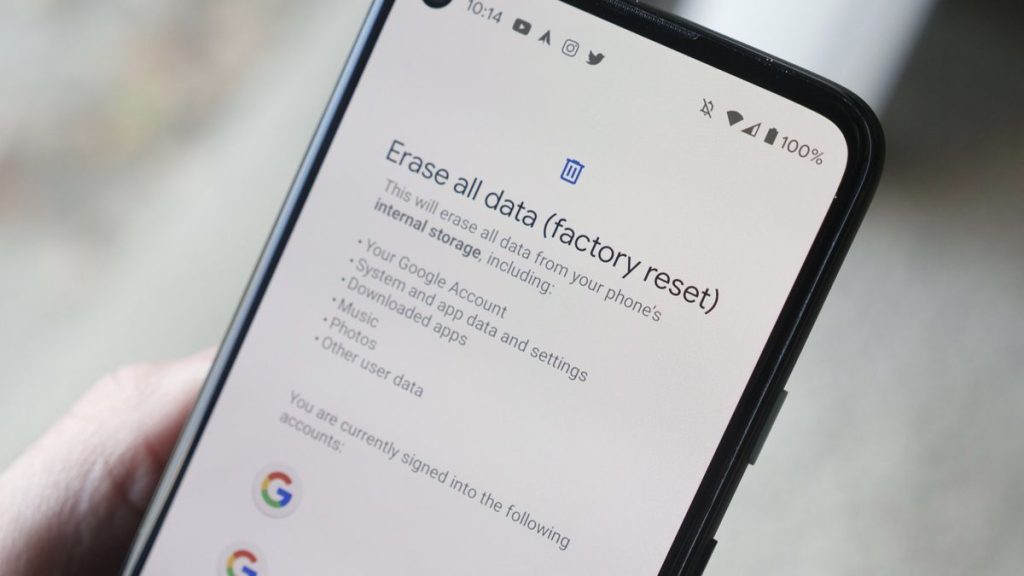
The Dangers of Factory Resetting Your Pixel 6 What You Need to Know
We’ve all been there – your phone is acting up, apps aren’t opening, and the battery life seems to be dwindling by the minute. In moments of frustration, the go-to solution for many is to simply factory reset their device. However, with the recent release of the Google Pixel 6 and its unique software and hardware features, users should think twice before hitting that “reset” button. In fact, according to a recent report by Lifehacker, factory resetting your Pixel 6 could potentially brick your device.
But what exactly does this mean? And how can you avoid this issue while still maintaining the smooth functioning of your device? In this article, we will delve into the potential dangers of factory resetting your Pixel 6 and provide you with alternative solutions to troubleshoot common phone issues without risking the integrity of your device.
Understanding Factory Resets: What Happens When You Hit That Button?

Before we dive into the specific risks associated with factory resetting your Pixel 6, it’s important to understand what a factory reset actually entails. Essentially, a factory reset wipes your device clean and restores it back to its original factory settings. This means that all data, apps, and settings will be erased from your device, essentially giving you a “fresh start.”
On most devices, this process is relatively safe and straightforward. However, the Pixel 6 differs from other phones in that it has a unique software feature called “Anti-Theft Protection.” This feature is designed to prevent unauthorized access to your device by requiring your Google account credentials after a factory reset. While this may seem like a security measure, it can actually lead to major issues if you don’t have access to your Google account or if your account becomes compromised.
So, why does this specifically affect the Pixel 6 more than other phones? One thing that sets the Pixel 6 apart from other devices is its use of Google’s in-house custom chipset, the Google Tensor. This new chip powers many of the phone’s features, including the Anti-Theft Protection feature. While this may seem like a great security measure, it also means that if something goes wrong during a factory reset, it could potentially damage the entire system and brick your device.
Risks of Factory Resetting Your Pixel 6
Now that we have a better understanding of what a factory reset actually entails on the Pixel 6, let’s discuss the potential risks associated with this action. As mentioned earlier, the main risk is bricking your device, which essentially renders it unusable. This can happen if the Anti-Theft Protection feature gets triggered and your device becomes locked due to a mishap during the reset process. Since the device is unable to verify your Google account, it will not be able to function properly.
Another risk is losing important data and settings that may not have been backed up before the factory reset. This includes contacts, messages, app data, and more. While most devices have built-in backup options, it’s always possible that some information may get lost in the process. This can be especially frustrating if you were trying to troubleshoot an issue that could have been resolved without resorting to a factory reset.
Additionally, factory resetting your Pixel 6 also means that you will have to go through the setup process again, which can be time-consuming. This includes logging into your Google account, downloading apps, and setting up preferences and settings. It’s not uncommon for users to forget certain login information or miss a step in the setup process, leading to further frustration and potential issues with the device.
To sum it up, the risks of factory resetting your Pixel 6 include:
- Bricking your device
- Losing important data and settings
- Time-consuming setup process
Alternative Solutions: Troubleshooting Without Resetting
Now that we understand the potential risks of factory resetting your Pixel 6, let’s explore some alternative solutions for common phone issues that may arise. These methods can help you troubleshoot and resolve problems without having to resort to a factory reset, thus avoiding the risks associated with this action.
Issue #1: Battery Life Draining Quickly
One of the most common issues that users face with their smartphones is poor battery life. If you find that your Pixel 6’s battery is draining quickly, there are a few things you can try before considering a factory reset.
Check Your Battery Usage: The first step is to check which apps are using the most battery power. To do this, go to Settings > Battery > Battery usage. This will give you a breakdown of the apps consuming the most battery on your device. If you notice any unusual apps draining your battery, try uninstalling or disabling them to see if it makes a difference.
Turn Off Adaptive Battery: The Pixel 6 has a feature called “Adaptive Battery,” which uses machine learning to optimize the battery life of your device. However, this feature may not work for everyone and could potentially be causing the issue. To turn off this feature, go to Settings > Battery > Adaptive battery and toggle it off.
Restart Your Device: Sometimes, a simple restart can make a big difference. If you haven’t restarted your Pixel 6 in a while, try doing so and see if it improves the battery life.
Issue #2: Apps Not Opening or Crashing
Another common issue for smartphone users is apps not opening or frequently crashing. This can be frustrating and affect the overall functionality of your device. Instead of immediately resorting to a factory reset, try these solutions:
Clear App Cache and Data: Sometimes, an app’s cache and data can get corrupted and cause it to malfunction. To clear the cache and data for a specific app, go to Settings > Apps & notifications, select the app you want to clear, and then tap on “Storage & cache.” From there, you can clear both the cache and data for that app.
Uninstall and Reinstall the App: If clearing the cache and data doesn’t work, try uninstalling and reinstalling the app in question. This will essentially give you a fresh installation of the app, which can resolve any issues it may be experiencing.
Update Your Device Software: It’s important to regularly update your device’s software as these updates often include bug fixes and improvements to the system. To check for updates, go to Settings > System and tap on “System update.”
Issue #3: Phone Running Slow
If your Pixel 6 is running slower than usual, there are a few things you can try before resorting to a factory reset.
Check Storage Space: One of the main reasons for a slow phone is lack of storage space. Make sure to regularly clear out any unnecessary photos, videos, and apps to free up space.
Clear System Cache Partition: The system cache partition stores temporary files used by your device, and over time, these files can become redundant and slow down your device. To clear this cache, turn off your device and hold down the power button and volume down button until the bootloader screen appears. Use the volume keys to navigate to “Recovery mode” and press the power button to select. From there, use the volume keys again to select “Wipe cache partition” and press the power button to confirm.
Turn Off Animations: While animations can make your device look sleek, they can also slow it down. To turn them off, go to Settings > About phone and tap on “Build number” seven times to enable developer options. Then, go to Settings > Developer options and toggle off “Window animation scale,” “Transition animation scale,” and “Animator duration scale.”
Tips to Avoid Factory Resetting Your Pixel 6

While the above solutions can help you troubleshoot common phone issues, there are also some preventative measures you can take to avoid having to factory reset your Pixel 6 in the first place.
Backup Your Device Regularly
As mentioned earlier, one of the risks of factory resetting your device is potentially losing important data and settings. To avoid this issue, make sure to regularly backup your device to a cloud service or external storage. This way, if something does go wrong and you do have to factory reset your device, you can easily restore your data.
Enable Two-Factor Authentication for Your Google Account
If you do end up having to factory reset your Pixel 6, having two-factor authentication enabled on your Google account can help protect against unauthorized access. This will require a code to be entered before you can log into your device after a reset, adding an extra layer of security.
Contact Customer Support for Help
If you’ve exhausted all troubleshooting methods and still can’t resolve your issue, it’s best to contact customer support for your device. They may be able to provide you with specific solutions or assist you in resolving the issue without having to resort to a factory reset.
Conclusion
In conclusion, while factory resetting your Pixel 6 may seem like a quick solution for common phone issues, it comes with its own set of risks. With the unique Anti-Theft Protection feature on the Pixel 6, users should think twice before hitting that “reset” button as it could potentially brick their device. Instead, utilize alternative solutions and preventative measures to troubleshoot and maintain the smooth functioning of your device. Following these tips will not only help you avoid major issues with your Pixel 6 but also save you time and frustration in the long run.


